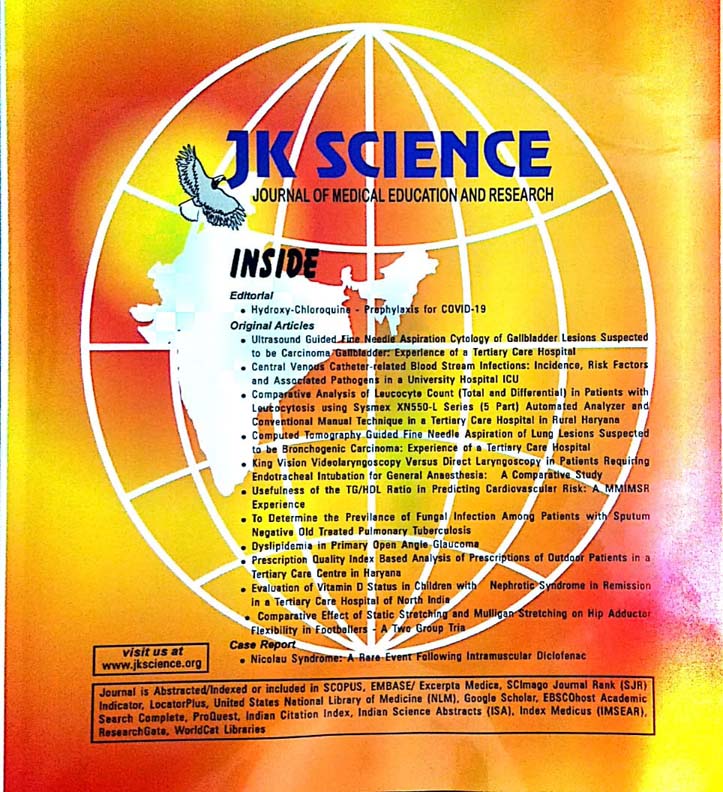Study of Risk Factors in Retinopathy of Prematurity in A Tertiary Eye Care Center
Keywords:
Retinopathy of Prematurity, Risk factors, Oxygen supplementationAbstract
Background: Retinopathy of prematurity (ROP) is a vascular disease of retina seen in premature infants which is associated with various risk factors.
Objective: To find out the risk factors associated with ROP in tertiary eye care center.
Material and Methods: The study was a hospital based, cross-sectional, observational study involving babies at risk of retinopathy of prematurity (ROP). A total of 400 infants were screened using indirect ophthalmoscope. At the time of screening the factors which were studied includes sex, gestational age, birth weight, respiratory distress syndrome, sepsis, blood transfusion, apnea, phototherapy and intraventricular hemorrhage.
Results: Out of 400 neonates, 232 (58%) were males and 168 (42%) were females. ROP was seen in 70 (17.5%) of these 400 neonates. Of these 70 neonates, 42.8% developed stage-1 ROP, 45.7% developed stage- 2 ROP, 5.71% developed stage- 3 and 5.71% developed stage- 4. Gestation age ≤34 week (p= 0.008) and birth weight <2kg (p<0.001) were found to be significant risk factors for ROP development. Respiratory distress syndrome (p=0.012) and oxygen supplementation (p<0.001) are also significant risk factors for the development of ROP.
Conclusion: This study shows low birth weight, low gestation age, Oxygen supplementation and respiratory distress syndrome are associated with development of ROP. Such analysis of risk factors helps us to predict ROP in high-risk cases.
Downloads
Downloads
Published
How to Cite
Issue
Section
License
Copyright (c) 2023 JK Science: Journal of Medical Education & Research

This work is licensed under a Creative Commons Attribution-NonCommercial-ShareAlike 4.0 International License.





